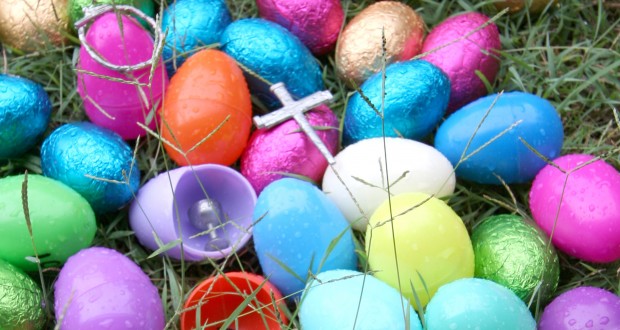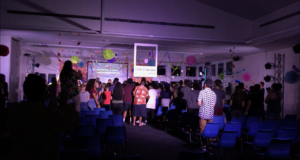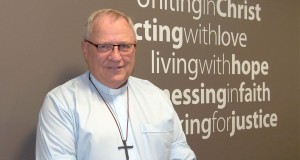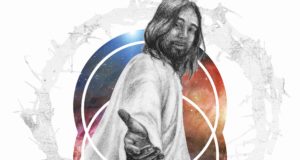Christians hear the Easter story regularly, but how do we breathe new life into the story—and do we even need to? Mardi Lumsden explores.
For some people the Easter story is a reminder of the purpose of their faith. For others it is the impetus to change their life. It is an epic tale of betrayal, loyalty, suffering, death, love, faith and above all hope. Ministers preach on the Easter story year after year, so how do they convey the message in new ways?
Rev Mel Perkins ponders whether people stop hearing how remarkable the Easter story actually is after hearing it many times.
“There is that great tension because the story on its own is incredibly powerful, so do we want to turn it into a circus where it becomes entertainment … or do we want the story to stand on its own?”
Mel says that people who experience death around Easter will always look at the story with different eyes.
“I was watching a family recently where the mother went into a coma and died three and a half days later. The family did an around-the-clock vigil with her until she died, but it was that very difficult, awkward space between life and death. How do you hold that tension?
“One of the things I think we lose in our celebrations around Easter is a sense of that tension; the whole of the death and the life together because the death is too awkward and uncomfortable.”
Looking beyond
Rev Peter Lockhart says annual repetition of the Easter story brings it freshly to people’s minds and that it is important to find ways people can engage with the story differently. To help do this, Peter reads something fresh about the story, for example a Lenten study or Sara Maitland’s challenging narrative of Mary Magdalene at the cross.
“Sometimes I will read something that is not theology. I’ll read sociology or anthropology and try and have that talk with the scriptures,” he says. “It is about looking at how the story interacts with the world; remembering that people probably don’t know the story as well as they think they know that story.”
He suggests comparing the different versions of the story and exploring how each Gospel deals with Jesus’ death.
After moving through the lectionary (a three-year cycle of suggested Bible readings) on Easter three times, Rev Linda Hamill wondered how she was going to communicate the story differently.
“I read the book Undone by Easter and that reframed for me the need to do things drastically differently,” she says. “We are charged to tell the story. God directed the people of Israel, the
Hebrews, to tell the story of the Passover; how God delivered them from Egypt, and to do that every year. There wasn’t the necessity to dress it up; it was simply remembering the goodness of God. That reframed for me what telling the Easter story is for a minister.
“We should be hearing the story of salvation almost every week and inviting people to accept or respond to that story. Otherwise, what’s the point? We are just teaching people to be nice.
“As leaders, we need to be excited by it and expect people to be excited about this. Maybe if we tapped into the creativity of the people, they would find more joy in it.
“The congregation is the church, it’s not the ministers. The more we get people involved to do that, to actually be a part, it comes more alive.”
Ken Acworth and his team helps children deepen their understanding of the Easter story by helping each child to make their own set of Resurrection Eggs.
“Each of the twelve colourful plastic eggs has a different memory-grabbing object to take Jesus’ journey to the cross and beyond,” says Ken.
“It has been such a buzz as each child is able to re-tell the Easter story in their own words by using simple prompts.”
Journeying through Easter
Mel Perkins loves being part of the Easter story when it becomes a journey within itself.
“I love to see liturgy that starts on Palm Sunday, then you start moving through the events of Holy Week,” she says.
“There are lots of different ways you can do that; different spaces you can visit, small groups, large groups, doing meditative things.
“When you get to Holy Thursday there are different liturgies you can do like Tenebrae, you can have a meal where you are getting people together, you can create a garden and plunge the place into complete darkness, you can shroud the whole of the front of the church in black cloth.
“There is part of me that wants to disturb because the story is disturbing,” she says.
“What I see in our rushing ahead is what we do in everyday life. When someone faces a death we want to rush them ahead to ‘you will be fine, it’s OK don’t worry about it’ … instead of allowing that space of healing that comes as they head into the tomb.
“God allows us to heal in God’s own time and then resurrection comes in God’s own time.”
Peter Lockhart is concerned that people beat themselves up in the guilt of Easter.
“How often do we get almost obsessed with the sin and death stuff, which sets up a whole understanding of the atonement that is problematic,” he muses.
“We don’t say, ‘Jesus rose for me’; we say ‘Jesus died for my sins’. I find that quite ironic given that in the Protestant tradition we have an empty cross in our churches, we don’t have a crucifix. We are actually meant to reflect more on the fact that Jesus rose again than we are to reflect on his death.
“Of course you don’t have the resurrection without the death … but we get so caught up in the death event.
Peter’s desire to include the idea of “Jesus rose for me” in the retelling of the Easter story is coupled with expanding the effect of that event to include the whole of creation.
“It is good to have that personal notion that Jesus came for ‘me’, but Jesus didn’t come for ‘me’, Jesus came for the cosmos.
“How do we understand the Easter event in terms of the whole creation and all people, not simply believers?” he asks.
Peter emphasises the importance of engaging with material that inspires and challenges people to think about things in new ways.
“If you just sit inside your own box of comfortable perceived orthodoxy then it is hard to see something new,” he says.
For Mel Perkins the most important thing is that people engage the Easter story with their own story and vice versa.
“Within this story there is hope for all of us that no matter what happens in our life … God, Jesus, the Spirit journeys alongside us in all of that,” she says.
“It doesn’t say pain is not going to happen, but that God journeys alongside us. That is the hope that we aren’t left alone in the pain, but there is life to come.”
 JourneyOnline
JourneyOnline







